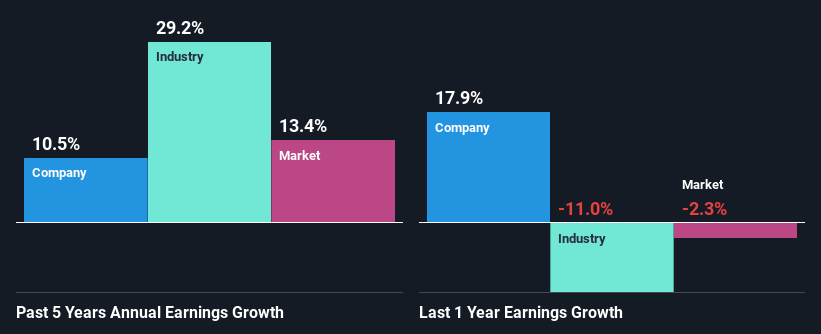NVE Corporation's (NASDAQ:NVEC) Stock On An Uptrend: Could Fundamentals Be Driving The Momentum?
Most readers would already be aware that NVE's (NASDAQ:NVEC) stock increased significantly by 15% over the past three months. Given that stock prices are usually aligned with a company's financial performance in the long-term, we decided to study its financial indicators more closely to see if they had a hand to play in the recent price move. Specifically, we decided to study NVE's ROE in this article.
Return on Equity or ROE is a test of how effectively a company is growing its value and managing investors’ money. Put another way, it reveals the company's success at turning shareholder investments into profits.
View our latest analysis for NVE
How To Calculate Return On Equity?
Return on equity can be calculated by using the formula:
Return on Equity = Net Profit (from continuing operations) ÷ Shareholders' Equity
So, based on the above formula, the ROE for NVE is:
32% = US$22m ÷ US$67m (Based on the trailing twelve months to December 2023).
The 'return' is the yearly profit. Another way to think of that is that for every $1 worth of equity, the company was able to earn $0.32 in profit.
Why Is ROE Important For Earnings Growth?
So far, we've learned that ROE is a measure of a company's profitability. Based on how much of its profits the company chooses to reinvest or "retain", we are then able to evaluate a company's future ability to generate profits. Generally speaking, other things being equal, firms with a high return on equity and profit retention, have a higher growth rate than firms that don’t share these attributes.
NVE's Earnings Growth And 32% ROE
Firstly, we acknowledge that NVE has a significantly high ROE. Second, a comparison with the average ROE reported by the industry of 14% also doesn't go unnoticed by us. This probably laid the groundwork for NVE's moderate 11% net income growth seen over the past five years.
We then compared NVE's net income growth with the industry and found that the company's growth figure is lower than the average industry growth rate of 29% in the same 5-year period, which is a bit concerning.
The basis for attaching value to a company is, to a great extent, tied to its earnings growth. It’s important for an investor to know whether the market has priced in the company's expected earnings growth (or decline). This then helps them determine if the stock is placed for a bright or bleak future. One good indicator of expected earnings growth is the P/E ratio which determines the price the market is willing to pay for a stock based on its earnings prospects. So, you may want to check if NVE is trading on a high P/E or a low P/E, relative to its industry.
Is NVE Efficiently Re-investing Its Profits?
NVE has a very high three-year median payout ratio of 128% suggesting that the company's shareholders are getting paid from more than just the company's earnings. In spite of this, the company was able to grow its earnings respectably, as we saw above. It would still be worth keeping an eye on that high payout ratio, if for some reason the company runs into problems and business deteriorates.
Moreover, NVE is determined to keep sharing its profits with shareholders which we infer from its long history of nine years of paying a dividend.
Conclusion
In total, it does look like NVE has some positive aspects to its business. The company has grown its earnings moderately as a result of its impressive ROE. Yet, the business is retaining hardly any of its profits. This might have negative implications on the company's future growth. Up till now, we've only made a short study of the company's growth data. So it may be worth checking this free detailed graph of NVE's past earnings, as well as revenue and cash flows to get a deeper insight into the company's performance.
Have feedback on this article? Concerned about the content? Get in touch with us directly. Alternatively, email editorial-team (at) simplywallst.com.
This article by Simply Wall St is general in nature. We provide commentary based on historical data and analyst forecasts only using an unbiased methodology and our articles are not intended to be financial advice. It does not constitute a recommendation to buy or sell any stock, and does not take account of your objectives, or your financial situation. We aim to bring you long-term focused analysis driven by fundamental data. Note that our analysis may not factor in the latest price-sensitive company announcements or qualitative material. Simply Wall St has no position in any stocks mentioned.

 Yahoo Finance
Yahoo Finance 
